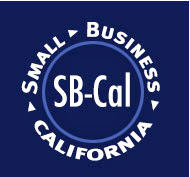Mark Herbert from Speakers Pelosi’s office sent me information that outlines the tax credits available to small businesses under the health bill. Note they are available now.
Please see below
The money given the SBA to continue the 90% guarantee of 7a and 504 loans and the waiver of fees is expected to run out in the next couple of weeks. It was expected that the $40 million of interim money would last until the end of April but it appears this will not be the case. If the money does run out it will be the third time in the last 6 months. What small business needs is a permanent solution. We need the passage of S2869 which both Senator Feinstein and Boxer have signed onto.
Small Business California is working with the National Association of Government Guaranteed Lenders and the National Small Business Association to get this done. One of our members Jim Baird of Bay Area Development is working with the Association of 504 lenders also in this effort.
You all know that Small Business California is headquartered in San Francisco. You also know that San Francisco has some quirky politics [I am being nice here]. The Board of Supervisors recently passed a resolution to make Monday a meatless day in SF. A number of years ago the Wall Street Journal wrote an article entitled “Who needs Oprah when you have the Board of San Francisco Supervisors”.
Scott Hauge
President
Small Business California
2311 Taraval Street
San Francisco, CA 94116
shauge@cal-insure.com
415-680-2188
WASHINGTON ― Many small businesses and tax-exempt organizations that provide health insurance coverage to their employees now qualify for a special tax credit, according to the Internal Revenue Service.
Included in the health care reform legislation, the Patient Protection and Affordable Care Act, approved by Congress and signed by President Obama on March 23, the credit is designed to encourage small employers to offer health insurance coverage for the first time or maintain coverage they already have. In general, the credit is available to small employers that pay at least half the cost of single coverage for their employees.
“This credit provides a real boost to eligible small businesses by helping them afford health coverage for their employees,” said IRS Commissioner Doug Shulman. “We urge small businesses and tax-exempt employers to look closely at this important tax break - which is already effective - to see if they qualify.”
The maximum credit is 35 percent of premiums paid in 2010 by eligible small business employers and 25 percent of premiums paid by eligible employers that are tax-exempt organizations. In 2014, this maximum credit increases to 50 percent of premiums paid by eligible small business employers and 35 percent of premiums paid by eligible employers that are tax-exempt organizations.
The credit is specifically targeted to help small businesses and tax-exempt organizations that primarily employ low and moderate income workers. It is generally available to employers that have fewer than 25 full-time equivalent (FTE) employees paying wages averaging less than $50,000 per employee per year. Because the eligibility formula is based in part on the number of FTEs, not the number of employees, many businesses will qualify even if they employ more than 25 individual workers.
The maximum credit goes to smaller employers – those with 10 or fewer FTEs – paying annual average wages of $25,000 or less.
Eligible small businesses can claim the credit as part of the general business credit starting with the 2010 income tax return they file in 2011. For tax-exempt employers, the IRS will provide further information on how to claim the credit.
The IRS will use postcards to reach out to millions of small businesses that may qualify for the credit. The postcards will encourage small business owners to take advantage of the credit if they qualify.
More information about the credit, including tax tips, guides and answers to frequently asked questions, is now available on the IRS Web site, IRS.gov.
Internal Revenue Service
Governmental Liaison for California & Nevada
Subscribe to:
Post Comments (Atom)



No comments:
Post a Comment